Breaking Down Proper Freestyle Body Position
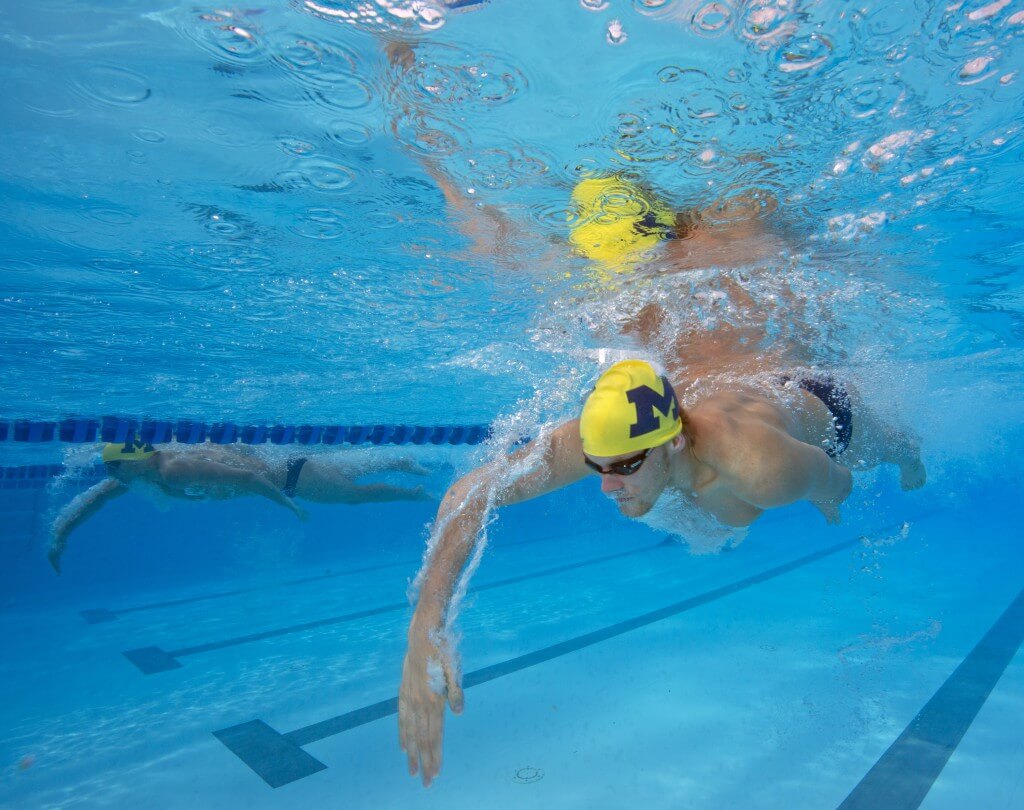
By Niki Urquidi, Swimming World College Intern.
If you have ever swum for Coach Jeff Poppell, current associate head coach of the Florida Gators, you’ve probably heard the phrase, “for every one inch you lift your head, your hips sink three inches.” Like most renowned coaches, Poppell understands that establishing proper freestyle body position can drastically improve a swimmer’s stroke.
As the backbone stroke for most training programs, proper body position while swimming freestyle is crucial for overall health and improvement. Let’s take a look at the three major elements of freestyle body position and some drills to help you improve your own technique.
Head
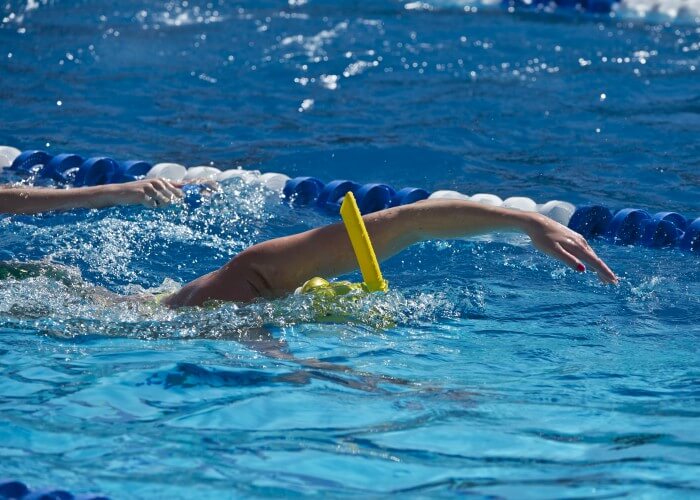
Photo Courtesy: Peter H.Bick
What better place to start then the top of your head? A good way to visualize the correct head position in freestyle technique is to think of a metal pole running through the top of your head down through your spine. If your head is too high or too low, the pole will bend and cause you to lose efficiency due to increased resistance pushing against you. You want to make sure that your head, neck and spine remain connected and in line with the pole to be as hydrodynamic as possible.
A good drill to help you feel the effect head position has on your stroke is kicking on your stomach with your arms by your side. Experiment with different head positions, and work with your coach to find the sweet spot where your hips stay high and you decrease drag. In all elements of body position, efficiency is the name of the game.
Shoulders
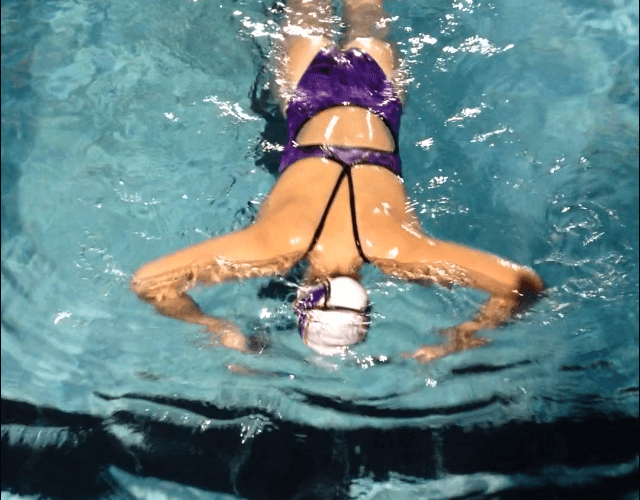
Photo Courtesy: Annie Grevers
Correcting shoulder position can translate to decreased fatigue levels while swimming freestyle. We all have those races in which we feel unstoppable as well as those practices where all we want to do is stop. The main difference between these two experiences can usually be attributed to over-rotating or under-rotating your shoulders.
When you over-rotate in freestyle, you tend to drop the arm that is already under water, creating drag and thus getting you nowhere fast. This bad habit can really get exhausting lap after lap. A research study conducted by Stelios Psycharakis and Ross Sanders in 2010 reported that the fastest swimmers rotated their shoulders less than the others in the 200m freestyle.
As Coach Andy Kershaw of the University of Miami explains to his swimmers, you want to keep your rotation small and tight. He prefers to use a body position drill in which you kick with one arm out in front and the other by your side.
To breathe, think of lifting your shoulder only about an inch or two above the surface of the water. This creates a small pocket of air from which you draw your breath, before quickly returning it to the face down position. This drill also helps to teach you to keep breaths small and short, as many swimmers start straying from this when fatigue sets in.
Under-rotating your shoulders is just as detrimental to your energy levels in freestyle. When you under-rotate, you lose a lot of length in your catch, causing you to “spin your wheels” without utilizing your full reach.
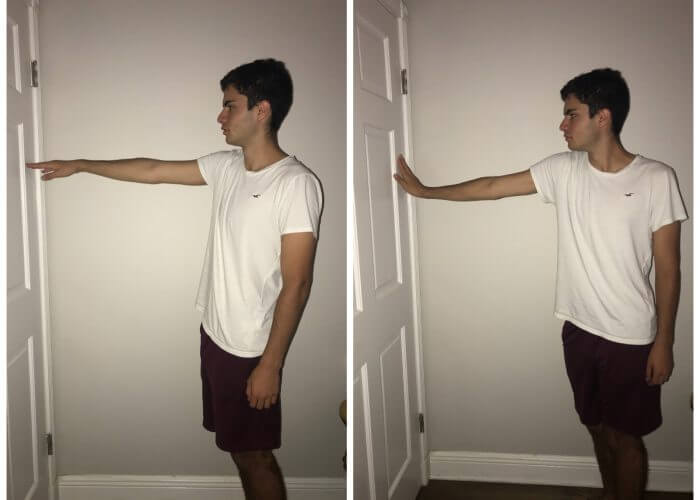
Photo Courtesy: Niki Urquidi. Henry Urquidi demonstrating out of water shoulder rotating drill.
A dryland drill that Coach Kershaw uses to ensure a longer reach consists of standing at arm’s-length from a wall. When your shoulders are square with the wall, reach out that arm so that your fingertips touch the wall.
Then, push your shoulder forward towards the wall, and watch as your hand moves forward to press flatly against the wall. This extra length provided by a simple, small rotation can make a big difference in your freestyle technique – and it’s easy to practice at the pool or at home!
Hips
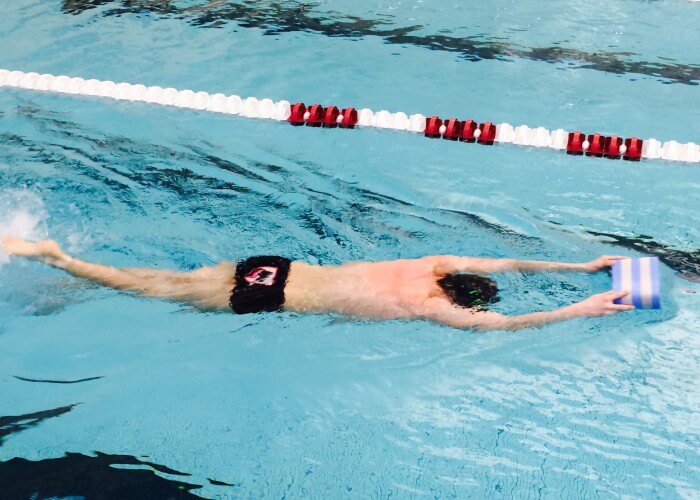
Photo Courtesy: James Sica
The movement of your hips during freestyle can be confusing to teach but easy to learn. While some controversy exists in the swimming world regarding hip rotation, the study mentioned above reported that swimmers tend to increase their hip rotation when fatigued, which leads to slower and less efficient swimming. Psycharakis and Sanders also reported that swimmers rotate their shoulders to a much greater extent than their hips.
In the most basic terms, the goal is to decrease rotation in your hips, because this motion typically lends to over-rotating your upper body. As mentioned, over-rotation is detrimental to your freestyle technique. Think of keeping your hips square to the bottom of the pool while using your kick to keep them afloat.
A drill that enforces this technique is kicking on your side with one arm extended in front of you and the other by your side. This time, when you breathe, pull through with your extended arm, allowing your shoulders to rotate but keeping your hips square. Next, recover the same arm to the front and repeat the motion.
To see this drill and other great drills in action, check out some body position videos!
Not all Techniques are Created Equal
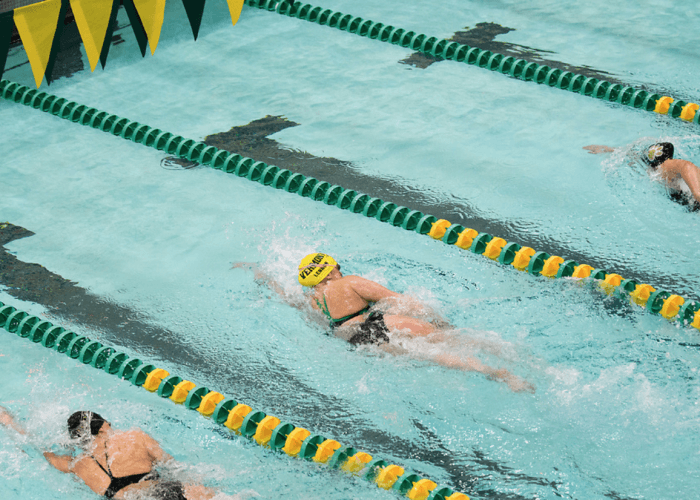
Photo Courtesy: Brian Jenkins – UVM Athletics
Some coaches may have differing opinions about optimal body positioning. Renowned coach Gary Hall Sr. teaches three different types of freestyle strokes: hip-driven, shoulder-driven and a hybrid of the two. Each type serves its own purpose in training and racing. Hall Sr. recommends using shoulder-driven freestyle in sprints while using a more hip-driven stroke in distance-oriented events. A full description and video of each stroke and how to use it can be found by clicking here.
While many of the body positions mentioned above are used in daily training, every swimmer and is different. The bottom line is that swimmers need to establish an appropriate body position that decreases drag and maximizes efficiency through the water.
Always remember that practice makes perfect. Making changes to a fundamental part of your stroke such as body position might feel strange at first, but continual practice is the only way to diminish bad habits. Choose to work towards building your freestyle technique today!
Commentary: All research was conducted by the author and does not necessarily reflect the views of Swimming World Magazine nor its staff.




Jose Alberto Cano
?
Thanks for the good review of freestyle body position.
About shoulder rotation, the drill that coach Kershaw uses that brings the shoulder about an inch or two above the surface of the water contradicts the photo of Henry after he rotates his shoulders. Henry’s shoulder would be rising significantly more than two inches above the water surface were he swimming.
Can you explain this discrepancy?
Great question! The dryland drill pictured is working on extending the freestyle reach, not necessarily increasing shoulder rotation. Most drills over-emphasize one aspect of a stroke over another – this one focuses more on extending the length of your catch. Make sense?
Yes! Thanks!
Harry Graham-Samson
http://swymnutmasters.com/training-tips/freestyle-style-options/